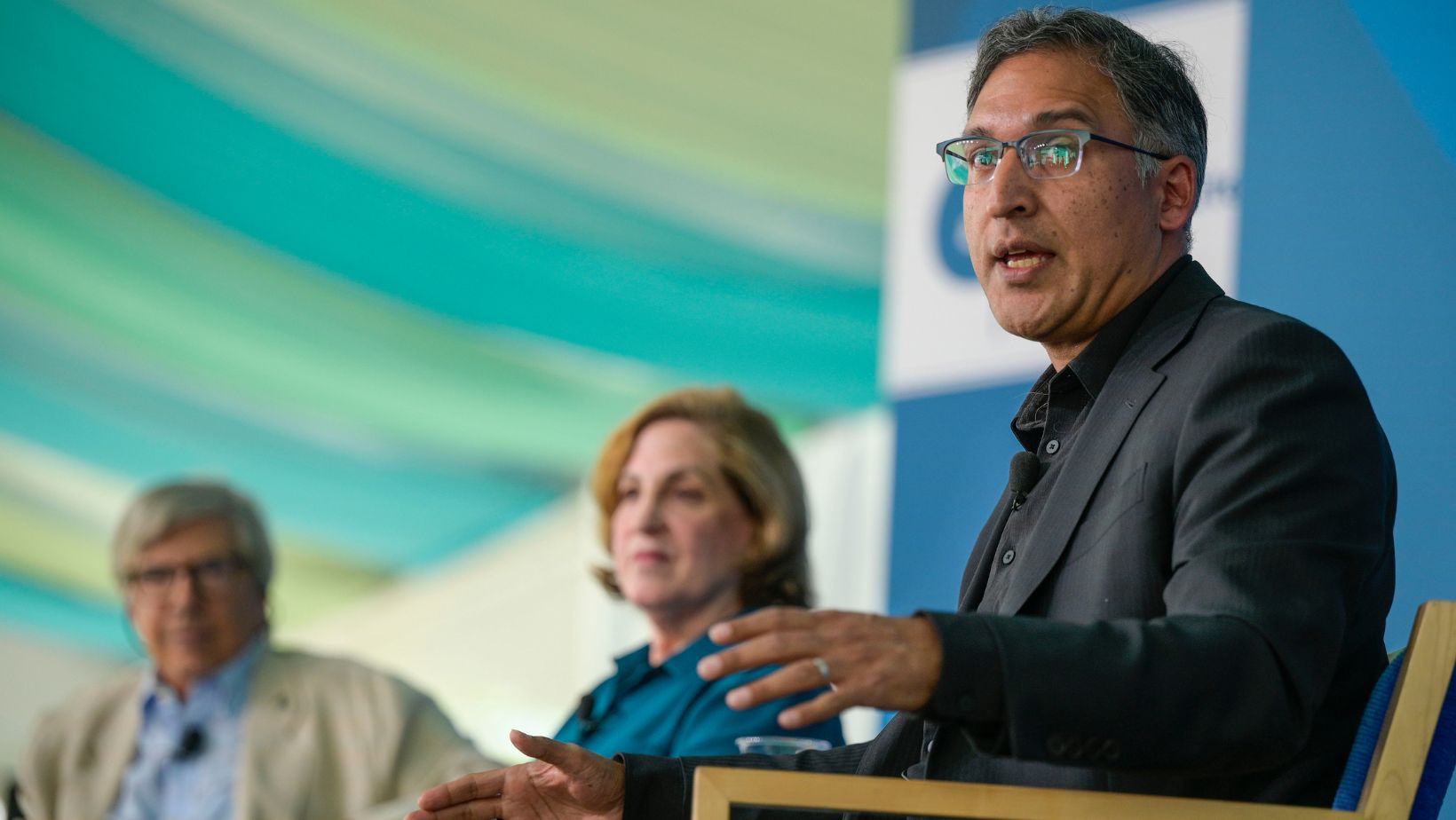At home, the Obama administration has been subject to a range of scorn about the handling of a border crisis that admittedly doesn't fit the immigration reform script. As tens of thousands of undocumented children fleeing gang violence and seeking family already living in the states turn themselves in to Customs and Border Patrol agents, the president declined to appear at one of the many overwhelmed centers processing incoming children. The administration said it didn't want to make the crisis into a "photo-op."
According to Matt K. Lewis, writing in the Telegraph, the administration was wrong again. "This is at best unromantic, and, at worst, cynical," Lewis wrote.
Does Lewis's assertion hold water? Was the Obama administration making a strategic mistake in skipping an opportunity for the president to make a visible but policy-pointless stop at the border?
The president's actions on the border crisis have been largely unflashy: requesting money from Congress, pressuring the countries from which the children are escaping to improve conditions there, and noting that refugee status is best requested from the U.S. embassy in the applicant's home country. 'Unromantic,' as Lewis asserts, for sure.
But the administration does have a public face addressing this crisis: Homeland Security Secretary Jeh Johnson. He, too, is a low-key figure, and news this week is that he has been maneuvering through backchannels to find an executive branch workaround of House intransigence on comprehensive immigration reform all while still managing the crush at the border.
Johnson is analytical and deliberate; one gets the sense that choosing words carefully is a requirement for the leader of this sprawling department assembled from 22 different government agencies after 9/11. Only the fourth person to hold the job, he seems to favor quiet intervention over photo-ops.
An example comes from the story he told at the 2014 Aspen Security Forum, in conversation with NPR Counterterrorism Correspondent Dina Temple-Raston. Temple-Raston asked Johnson about the border crisis, and about Johnson's own experience at the border.
Dina Temple-Raston: I wanted to start by talking a little bit about immigration just because it's so in the news, and then I'll bring it back around to terrorism, and specifically, this issue of unaccompanied children that are showing up. And you've been down at the border. You've seen this firsthand. Can you describe to us what you saw and how it affected you?
Sec. Johnson: I came into office December 23rd, and almost from the beginning I was hearing about the issue of unaccompanied kids coming into the Rio Grande Valley illegally. I went down to Brownsville, to our detention center near Brownsville in January. One of the things that struck me then was that day we had 995 detainees, only 18 percent of whom were from Mexico. And this is a mile from the Mexican border. The other 82 percent were from 30 different countries all across the globe, different continents, and so it was apparent to me then that the Rio Grande Valley Sector of the Southwest border needed to be an area of particular concern.
In January, in our budget process, we estimated that we were going to have 60,000 unaccompanied kids coming in. We ramped up resources. And then the numbers really began to spike to an unprecedented level in the period of March, April, May. I was hearing reports about this and recognized that we needed a plan to deal with it.
Thursday before Mother's Day, so that was probably May 8th, I got a report from the Customs and Border Protection that the numbers were really spiking up, and we needed to address it, and they were recommending certain things to me that I needed to do as the Secretary of DHS on a DHS-wide basis to address this spike in migration by the kids.
And so my wife, Susan, and I were planning to go out to California to visit our son at Occidental College, and we were going to fly back in time to spend the rest of the day with our daughter, who's back in Washington, for Mother's Day. And I said to Susan, "While we're out there would you mind stopping with me in South Texas to see a lot of other kids in between our two kids?" And we went there to the processing center at McAllen Station, and when you walk into a border patrol processing center you see a long table with border patrol agents in green sitting on one side in front of computer terminals, and they're conducting interviews of the illegal migrants that have just come in, most often adult men, and they're taking down basic information, name, where you're from, age, and so forth, and so on.
We walked in on this particular day, it was Sunday, May 11th, Mother's Day, and first of all, it was flooded with people, kids, and what was most striking is on this long processing table you've got the border patrol agents in their green uniforms, and on the other side, sitting on benches, are 7-, 8-year-old children, 10-year-old children being interviewed and processed. And my first encounter, I've been there probably five times, I think, and every time I go there I spend time talking to the children about why they made this journey. And my first encounter was the most memorable.
I saw this little girl with this beautiful long black hair, she was about 10 or 12 years old, sitting there being interviewed by a border patrol agent, and I asked her, "Where's your mother?" And through the translator she said, "My mother is dead. I'm looking for my father in the United States. That's why I came here." And the translator started to cry. The little girl started to cry. And I don't mind telling you I started to cry. And I came back to Washington the next day realizing this was a big problem, and we had to do something about it. And I made a bunch of phone calls to the ambassadors of the three Central American countries, the ambassador from Mexico, Kathleen Sebelius, the Secretary of HHS then, Deputy Secretary of Defense, the American Red Cross, to mobilize, to begin the process of mobilizing the resources that we needed to address this problem.
As I'm sure you know, we've brought to bear a lot of resources to address it. Over the last four to six weeks, the numbers have been going down, and overall apprehensions among kids, adults with kids, unaccompanied adults, it reached its high water mark around June 10th, and it's been going back down, but it could spike back up again at any moment, and so we've surged resources, and we have on Capitol Hill right now a request for supplemental funding, which is critical, which Congress is going to be taking up this week and next week, and if it doesn't pass, we're going to run out of money to deal with this.
And I've got my CFO working overtime without sleep trying to figure out how we are going to pay for this if Congress doesn't act. Basically, that's not an option because I'm going to have to dial back all the things we've done to surge resources to deal with this spike unless Congress acts. I've been in a number of conversations with members on both sides of the aisle about the urgency of this, and we really need it to pass. Sorry for the long-winded answer.
Dina Temple-Raston: Do you know what happened to the little girl?
Sec. Johnson: I do not know what happened to the little girl, and that's something I will wonder about all the rest of my life.


